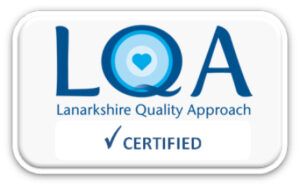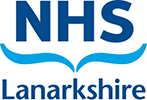Dietary advice whilst taking Orlistat
Information for patients
NHS Lanarkshire Nutrition and Dietetic Department
PIL.DIETAD.22_12321.L
Dietary advice whilst taking Orlistat
You have been prescribed Orlistat to help you to lose weight. Here is some useful information to help you gain the most benefits and limit any side effects from the medication.
Orlistat (Xenical) is a drug that can help with weight loss. Research has shown that taking this medication along with eating a healthy diet and keeping active can help with losing weight.
How does Orlistat work?
Orlistat works by reducing how much fat from your food gets absorbed into your body. This means that a third of the fat from your food will pass through your body in your stools (poo).
What are the side-effects?
You should avoid foods that are high in fat as this can make it more likely that you will have side effects. Side effects include:
- Wind
- Diarrhoea
- Smelly stools and an urgency to pass stools
Many people have some side effects but these usually get better with time and by following a low fat diet.
What dose should I take?
You should take 1 tablet (120mg) 3 times per day. The tablet should be taken immediately before, during, or up to 1 hour after a meal. Do not take the tablet if you miss a meal.
How much weight should I lose?
It is safe to aim to lose 5% of your body weight over 3 months. In time you will change your eating habits to have a lower fat diet and no longer need the medication. Remember, a loss of 0.5 to 1kg (1-2lbs) per week is a good steady weight loss.
Your dietitian or nurse will review your progress regularly. If you have not lost enough weight within three months, your GP will stop the prescription.
What should I eat and drink?
This table shows you food and drink that you are allowed to have, as well as things that you should avoid eating or drinking.
| Foods allowed | High fat foods to avoid |
| Meat/Alternatives: lean meat (without fat that you can see), soya, tofu, myco-protein, pulses (such as lentils & beans) | Meat: meat with fat you can see, meat with skin on, crackling, fatty meat (i.e. sausages, black pudding, luncheon meat, belly pork, faggots, pork pie, salami, duck, goose), pate, sausage rolls, pasties, fried meat (i.e bacon-try grilling instead) |
| Fish: white fish such as cod or plaice. | Oily Fish: fish canned in oil (e.g. kippers, pilchards, sardines, tuna), fried fish, fish in batter or breadcrumbs |
| Eggs: egg white, 1 boiled or 1 poached egg or 1 scrambled (cooked in no butter or fat) | Eggs: fried eggs and scotch eggs |
| Dairy Produce: skimmed milk, semi-skimmed milk, low fat soya, coconut, rice or oat milk (choose those with added calcium) fromage frais, ‘diet’, ‘light’ and low fat yoghurts (including low fat Greek style yoghurt and crème fraiche), skimmed milk powder, low fat coffee whitener | Dairy Produce : whole milk, cream, cream alternatives, evaporated milk, ice cream, full fat coffee whitener, instant dried milk powders with non-milk fat, thick and creamy yoghurt, Greek yogurt (unless low fat), crème fraiche (unless low fat) |
| Cheese: cottage cheese, low fat cheese spreads. | Cheese: full fat cheese, cream cheese. |
| Fats: low fat spread in small amounts, spray cooking oil. | Fats: lard, suet, dripping, vegetable oils, butter or margarine, all fried foods. |
| Fruit and vegetables: fruit (fresh, stewed, tinned or dried), vegetables (fresh, frozen, tinned or dried), baked beans, boiled, mashed or jacket potatoes (without margarine or butter), small portion of reduced fat oven chips. | Fruit and vegetables: avocado, olives, nuts, chips, roast potatoes, crisps (including reduced fat crisps), oven chips, potato waffles, fried vegetables. |
| Cereals, Bread & Biscuits: bread, crispbreads, rice, pasta, breakfast cereals, flour, and chapattis (made without fat) | Cereals, Bread & Biscuits: pastry, shortbread, cakes, sponge puddings, biscuits, cereal bars with nuts or chocolate, batters, Yorkshire puddings, dumplings, fried bread, fried rice, chapattis fried in fat, naan bread. |
| Miscellaneous: vinegar, herbs, spices, salt, pepper, ketchup, pickles, fat-free salad dressings. | Miscellaneous: toffee, fudge, chocolate, lemon curd, peanut butter, mince-meat, marzipan, take away meals, cream soups, sauces and gravies made with butter or margarine, mayonnaise, salad cream, salad dressings, Indian sweets made with condensed milk, fried Indian foods such as samosa, pakora, paratha, chevda, and nuts. |
| Beverages: tea, coffee, fruit juices, fruit squash, mineral drinks, fizzy drinks, malted drinks, drinking chocolate/cocoa (only if made with skimmed/semi-skimmed milk), low fat malted milk drinks and hot chocolate (made with water). | Beverages: full fat milk drinks (e.g. cocoa, chocolate or malted drinks, including instant malted milk drinks and hot chocolate), Advocaat and cream liqueurs. |
If you are using packaged foods, remember to add up the fat in all the packets you are eating from. You should still be able to enjoy tasty meals while on your weight loss journey.
Review date: June 2024
Issue No: 01
Reference: PIL.DIETAD.22_12321.L
If you need this information in another language or format, please e-mail:





